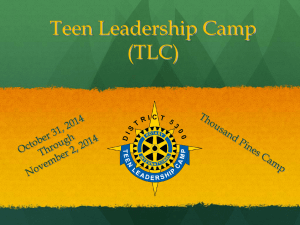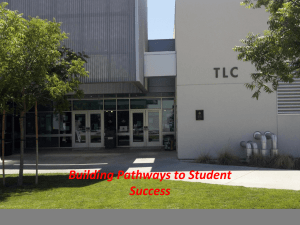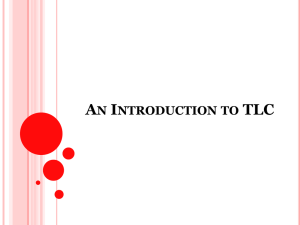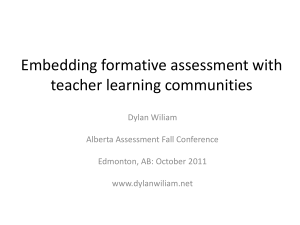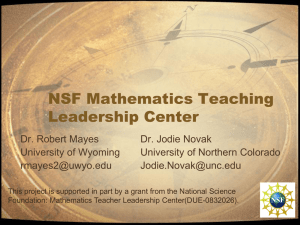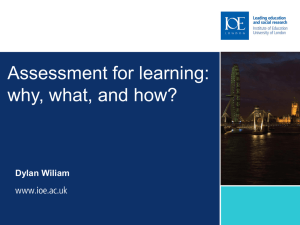Harnessing the Power of Teacher/Leaders
advertisement
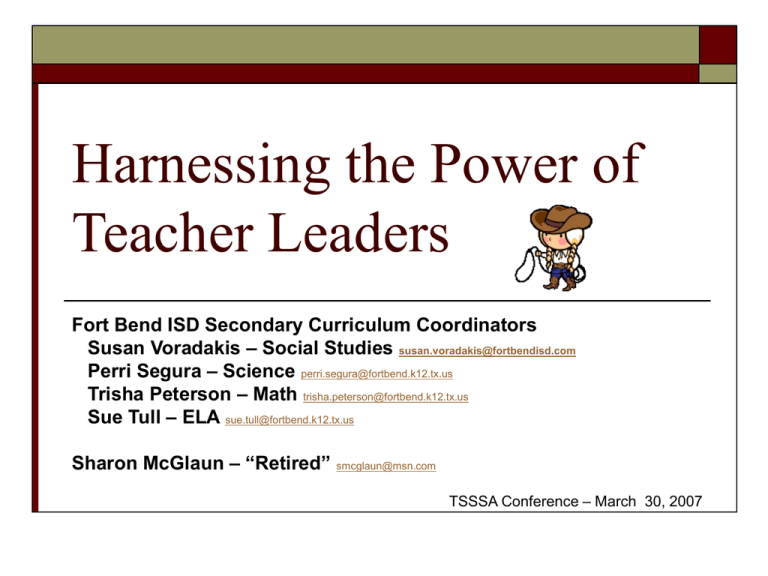
Harnessing the Power of Teacher Leaders Fort Bend ISD Secondary Curriculum Coordinators Susan Voradakis – Social Studies susan.voradakis@fortbendisd.com Perri Segura – Science perri.segura@fortbend.k12.tx.us Trisha Peterson – Math trisha.peterson@fortbend.k12.tx.us Sue Tull – ELA sue.tull@fortbend.k12.tx.us Sharon McGlaun – “Retired” smcglaun@msn.com TSSSA Conference – March 30, 2007 Fort Bend ISD Suburban District – southwest of Houston Secondary Schools: 10 High Schools 12 Middle Schools 2 Alternative Campuses You might be a coordinator if you… Write curriculum Create assessments Read, research, and attend conferences Organize district staff development Train teachers, department chairs, administrators Read, research, and attend conferences Attend meetings Mentor teachers, department chairs, administrators Read, research, and attend conferences Lead meetings Facilitate, lead, and serve on committees Read, research, and attend conferences…. What is the expected outcome? Understanding of CIA? Implementation of state/district curriculum? Data-driven decision making? Improved test scores? Teacher success? Student Success? Reality Campuses sometimes operate in reactive rather than proactive mode (constant remediation of students rather than instruction). Busy administrators provide little instructional leadership or expectations. Teachers are expected to “collaborate” before or after school, or they work in isolation. Data does not impact instruction. Students do not reach their potential. …School culture and supervision tend to ignore or divert teachers from implementing and continuously improving their mastery of effective instructional and assessment practices. We don’t commonly see teaching, followed by assessment, then adjustment to practice on the basis of assessment results. Isolation masks the starkly different results achieved by different teachers. - Mike Schmoker, Results Now Think Pair Share How do you make the TEKS the focus of classroom instruction and assessment? How do you bring about systemic change within a content area, grade level, and school? The good news is that we know what to do. Education research has equipped us with abundant evidence on instructional and leadership strategies that are likely to result in improved student achievement. – Doug Reeves, “Closing the Implementation Gap” Effective Practice Marzano – High Yield Strategies DuFour – PLC Schmoker – Collaborative Planning Gardner – Learning Styles Tomlinson – Differentiated Instruction McTighe & Wiggins - UBD And many others … Putting It All Together: One High School’s Results 2005 TAKS Met Standard at Panel Rec. 2006 TAKS Met Standard at Panel Rec. Difference 9th Grade Math 41% 26% -15 10th Grade Math 30% 42% +12 11th Grade Math 49% 64% +15 10th Science 23% 35% +12 11th Science 44% 54% +10 10th Social Studies 72% 76% +4 11th Social Studies 85% 93% +8 9th ELA 74% 78% +4 10th ELA 52% 80% +28 11th ELA 83% 86% +3 Discuss the slide with your neighbor. Write down any questions that you have based on the data. The purpose of the presentation is to demonstrate how to make a difference at the campus level by – 1. Impacting teachers directly, through teacher leaders. These leaders, rather than coordinators or other administrators, relay information and implement district expectations. 2. Implementing the TLC model of collaborative planning, deeper understanding of the curriculum, and reflective practices that drive instruction. TLC Teacher Leadership Corps History of the Program Beginnings Year 1 – one school Year 2 – four schools TLC Campus Structure Principal Campus Coordinator (Dean, AP) Lead TLC ELA Team English I English II English III Reading Math Team Algebra I Geometry Algebra II Science Team IPC Biology Chemistry Social Studies World Geography World History U.S. History Self Reflection Do you have a similar structure? What do team leaders do? Do teams meet regularly? What is the focus of the meetings? Do teachers grow, does instruction improve, are student scores going up as the result of team meetings? How is TLC Different? “I have been a part of small learning communities which addressed cross curricular learning themes to motivate students and staff. This TLC initiative is different as it affects students by affecting teachers’ instruction. That can be a sensitive area for the unwilling. However, it is the most powerful and most necessary. Mediocre instruction produces mediocre students. We owe ourselves and our students more than that.” - TLC Teacher Goals of TLC Short term - Improve student achievement on TAKS Long term – Focus on TEKS and enhance classroom instruction Long term – Develop effective peer coaching networks to support teachers and students. Tools of TLC Curriculum Calendar with target student expectations Collaborative Team Planning Form – focus on TEKS Mini Assessments – collect information on impact of instruction Data Reporting Forms – collect data to determine next course of action Target SE’s Develop team curriculum calendar for entire year Identify areas for improvement –target SE’s Plot target SE’s for specific instruction and assessment on team calendar Can’t fix all problems, but have to start somewhere Sample Calendar Collaborative Team Planning Process Teams meet at least once per week Not just lesson planning Collaborating/discussing instruction Creating time in the schedule does not create buy-in or understanding Focused Collaborative Team Planning Date: Teachers/Administrators in Attendance: Reflections: What worked last week and what didn’t? Why? And now what? Student Expectations: Which one of the tested TEKS are you going to focus on this week? Write it out. Analysis of TAKS Assessment: (1)How was this Student Expectation tested on TAKS? (2)What did you learn by looking at the tested items? (3)What skills must be used by students to successfully answer the items? Teacher Assessment: (1)How will you continuously determine whether your students learned what was expected at the level of TEKS/TAKS? (2)Will you give a mini-assessment? If so, attach the items. Teaching Strategies: What teaching strategies will you use to move students to the level expected of them on TAKS? Activities: What do you expect the students to do? Monitor and Adjust: What will you do if the students do not learn it? Team: Teachers/Administrators in Attendance: Reflections: What worked last week and what didn’t? Why? And now what? Students did poorly on warm-up questions covering 13th, 14th, 15th amendments. The warm-ups did not include direct instruction. Student Expectations: Which one of the tested TEKS are you going to focus on this week? Write it out. US 18B - Evaluate various means of achieving political rights, including the19th, 24th, and 26th amendments. Analysis of TAKS Assessment: (1)How was this Student Expectation tested on TAKS? (2)What did you learn by looking at the tested items? (3)What skills must be used by students to successfully answer the items? Teacher Assessment: (1)How will you continuously determine whether your students learned what was expected at the level of TEKS/TAKS? (2)Will you give a mini-assessment? If so, attach the items. 1. Teaching Strategies: What teaching strategies will you use to move students to the level expected of them on TAKS? Review/reteach, or teach cause/effect,inferencing, drawing conclusions; review amendment purpose and process; review 13th-15th; introduce 19th, 24th, 26th Activities: What do you expect the students to do? Students will choose a suitable Thinking Map organizer that demonstrates cause/effect context for amendments (13th,14th, 15th, 19th, 24th, 26th). Monitor and Adjust: What will you do if the students do not learn it? Determine which amendments are confusing to students; develop interactive timeline to review Civil Rights amdmts Follow-up: List any follow up responsibilities or materials needed and the person responsible for each. Voradakis – locate questions McGlaun – adjust calendar 2. 3. 03,04,06 – 2/3 questions use cause/effect; 1 question uses excerpt and inferencing Students must relate amendments to their historical context Cause/effect; inference; drawing conclusion Sample Lesson Plan Week: April 2 - 6 Monday - Tuesday Instructional Activities Objectives TEKS: Civil Rights Objectives TAKS: 8.17B/US7A –Trace the historical development of the civil rights movement in the 18th, 19th, and 20th centuries including the 13th, 14th, and 15th amendments US 18B - Evaluate various means of achieving political rights, including the 19th, 24th, and 26th amendments. Procedures: 1. Review the results of mini-assessment with students. Have students explain why the distractors are incorrect. 2. Skills mini-lesson: C/E, Inferencing, Drawing Conclusions - Jarrett book pp. 3 – 10 3. Content Lesson: Civil Rights Amendments 1. Station Rotation – each amendment 2. Foldable – flip book on amendments 3. C/E Thinking Map – each amendment Assessment(s): Mini Assessment Mini Assessments TAKS Format Limited to 1-2 SE’s 4-5 questions each Every 3 weeks Can be integrated into regular test or as a stand alone assessment Can be formative or summative Determine “passing” standard (compare to TAKS) Team decides on rules for administration of tests Data Analysis Everyone sees everyone’s data Discuss the results and the reasons for the results Identify remediation strategies and incorporate into upcoming lesson(s) “This is definitely the most rewarding program I have ever been a part of. In looking at what the team has accomplished so far this year: segmenting and adapting the curriculum to fit the needs of the students; incorporating best practices…, aligning our team goals…, pinpointing problem areas and adapting our teaching to those needs, I can truly say that TLC has brought our department a long way.” - TLC Teacher Lead TLC Monitor progress of teams through collecting documentation, meeting with teams, conducting walk-throughs, etc. Provide support for TLC teachers Liaison between campus and district administrators Role of Administrators Provides vehicle for legitimate instructional leadership Attend team meetings Monitor implementation through focused walk-throughs Provide accountability for all team members NCREL recommends, based on research on schools that are making the most progress with improving student results, that schools provide teachers with three hours of collaborative time each week. – SMART Goals Other Components & Issues TAKS Support Coaching Scheduling District Support Structure District TLC Coordinator ELA MATH SCIENCE SOCIAL STUDIES “Buddy” Coordinator “Buddy Coordinator” “Buddy Coordinator” “Buddy Coordinator” Helping Teachers 2 Helping Teachers 2 Helping Teachers 3 Helping Teacher 1 Campus Helping Teacher 1 Campus Helping Teacher 1 Campus Helping Teacher 1 Campus Helping Teacher 1 CAMPUS Meetings Team TLC Attend Attend weekly campus TLC mtgs. Attend district TLC mtgs. Attend Attend Attend training “Buddy” Coordinator Lead TLC Lead weekly team mtgs. DISTRICT Meetings weekly team mtgs. Lead weekly campus TLC mtgs district lead TLC mtgs. district TLC mtgs. Attend training Attend weekly team TLC Coordinator Attend mtgs. mtgs. Attend weekly campus TLC mtgs weekly team Meet with each TLC Attend Attend district lead TLC mtgs. weekly campus TLC mtgs Lead district lead TLC mtgs. Lead district TLC mtgs. Attend coordinator mtgs. Attend Attend mtgs. Lead training district TLC coordinator mtgs. Attend training Teachers must be clear about the connection between their own learning and improvements in student learning. – Joan Richardson, “Think Outside the Clock” Growing Our TLC’s Book Study Weekly Team Meetings Share successes Discuss difficulties Lessons in Leadership Effective Classroom Instruction Training Content Area Trainings Reflections 2005 TAKS Met Standard at Panel Rec. 2006 TAKS Met Standard at Panel Rec. Difference 9th Grade Math 41% 26% -15 10th Grade Math 30% 42% +12 11th Grade Math 49% 64% +15 10th Science 23% 35% +12 11th Science 44% 54% +10 10th Social Studies 72% 76% +4 11th Social Studies 85% 93% +8 9th ELA 74% 78% +4 10th ELA 52% 80% +28 11th ELA 83% 86% +3 Additional Resources TLC Program Outline TLC Glossary TLC Program – Use of TLC Period Sample Curriculum Calendar Collaborative Team Planning Form Mini Assessment Data Form Mini Assessment Reflections Planning Considerations Tic TAKS Forms – Grades 10 & 11 Resource List

